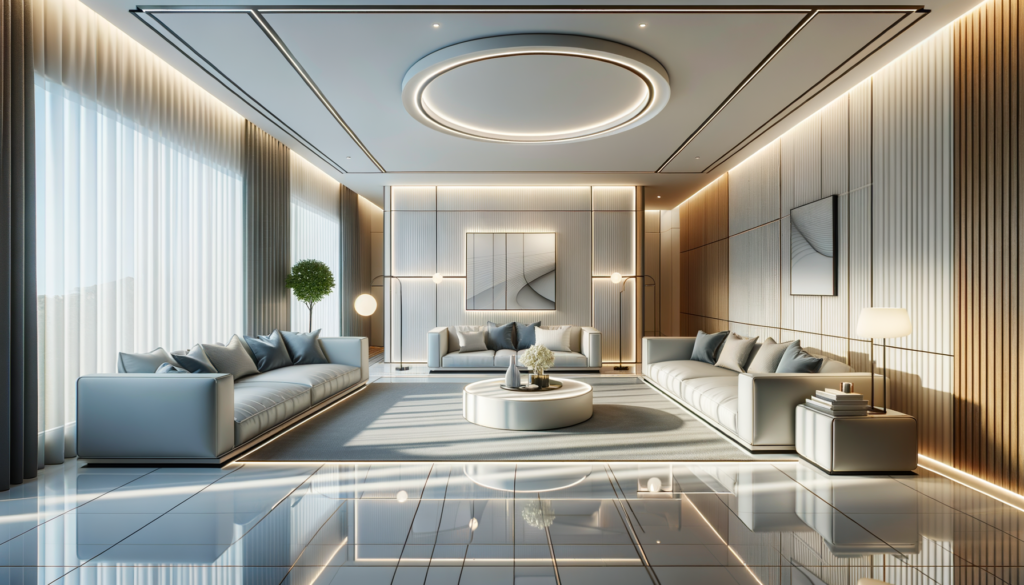The Gaming Blog

A Practical Guide to PVC Wall Panels for Modern Interiors
Introduction to PVC Wall Panels
In the realm of interior design, PVC wall panels have emerged as a versatile and practical solution for modern homes and commercial spaces. They offer a blend of aesthetic appeal and functional benefits, making them a popular choice for homeowners and designers alike. This article delves into the various aspects of PVC wall panels, highlighting their advantages, applications, and installation processes.
Advantages of PVC Wall Panels
PVC wall panels are renowned for their durability and ease of maintenance, which are among their most significant advantages. Unlike traditional materials such as wood or plaster, PVC panels are resistant to moisture, making them ideal for areas prone to dampness, such as bathrooms and kitchens. Their resistance to mold and mildew further enhances their appeal in such environments.
Another advantage is their lightweight nature, which simplifies installation and reduces labor costs. PVC panels can be easily cut and shaped to fit any space, offering flexibility in design without the need for specialized tools. Additionally, they are available in a wide range of colors, textures, and finishes, allowing for creative expression and customization to suit any interior style.
Furthermore, PVC wall panels are cost-effective. They provide a budget-friendly alternative to more expensive materials while still offering a high-end look. The panels’ longevity also means fewer replacements, contributing to long-term savings.
Applications of PVC Wall Panels
The versatility of PVC wall panels extends to their applications, which are numerous and varied. In residential settings, they are commonly used in bathrooms, kitchens, and basements due to their water-resistant properties. Their ability to mimic the look of traditional materials such as wood or stone makes them a popular choice for living rooms and bedrooms, where aesthetics are a priority.
In commercial spaces, PVC panels are often employed in offices, retail environments, and hospitality settings. Their ease of cleaning and maintenance makes them ideal for high-traffic areas, while their aesthetic versatility allows for the creation of unique and inviting spaces that reflect a brand’s identity.
Moreover, PVC panels are increasingly being used in healthcare and educational facilities, where hygiene and ease of maintenance are crucial. Their non-porous surface prevents the accumulation of bacteria and germs, contributing to a healthier environment.
Installation Process of PVC Wall Panels
Installing PVC wall panels is a straightforward process that can be undertaken by DIY enthusiasts and professionals alike. The first step involves preparing the wall surface, which should be clean, dry, and free of any debris. This ensures that the panels adhere properly and remain secure over time.
Once the wall is prepared, the panels can be cut to size using a standard saw or a utility knife. It is important to measure accurately to ensure a seamless fit. The panels are then attached to the wall using adhesive or screws, depending on the surface and the specific requirements of the installation.
For a professional finish, it is advisable to use trims and corner pieces to cover any exposed edges. This not only enhances the appearance but also provides additional protection against moisture and wear. With the right tools and techniques, PVC wall panels can transform a space quickly and efficiently.
Conclusion: Embracing PVC Wall Panels in Modern Interiors
PVC wall panels offer a practical and stylish solution for modern interiors, combining durability, versatility, and affordability. Whether used in residential or commercial settings, they provide an attractive alternative to traditional wall coverings, with benefits that extend beyond aesthetics. As more homeowners and designers recognize their potential, PVC wall panels are likely to become an integral part of contemporary interior design.









